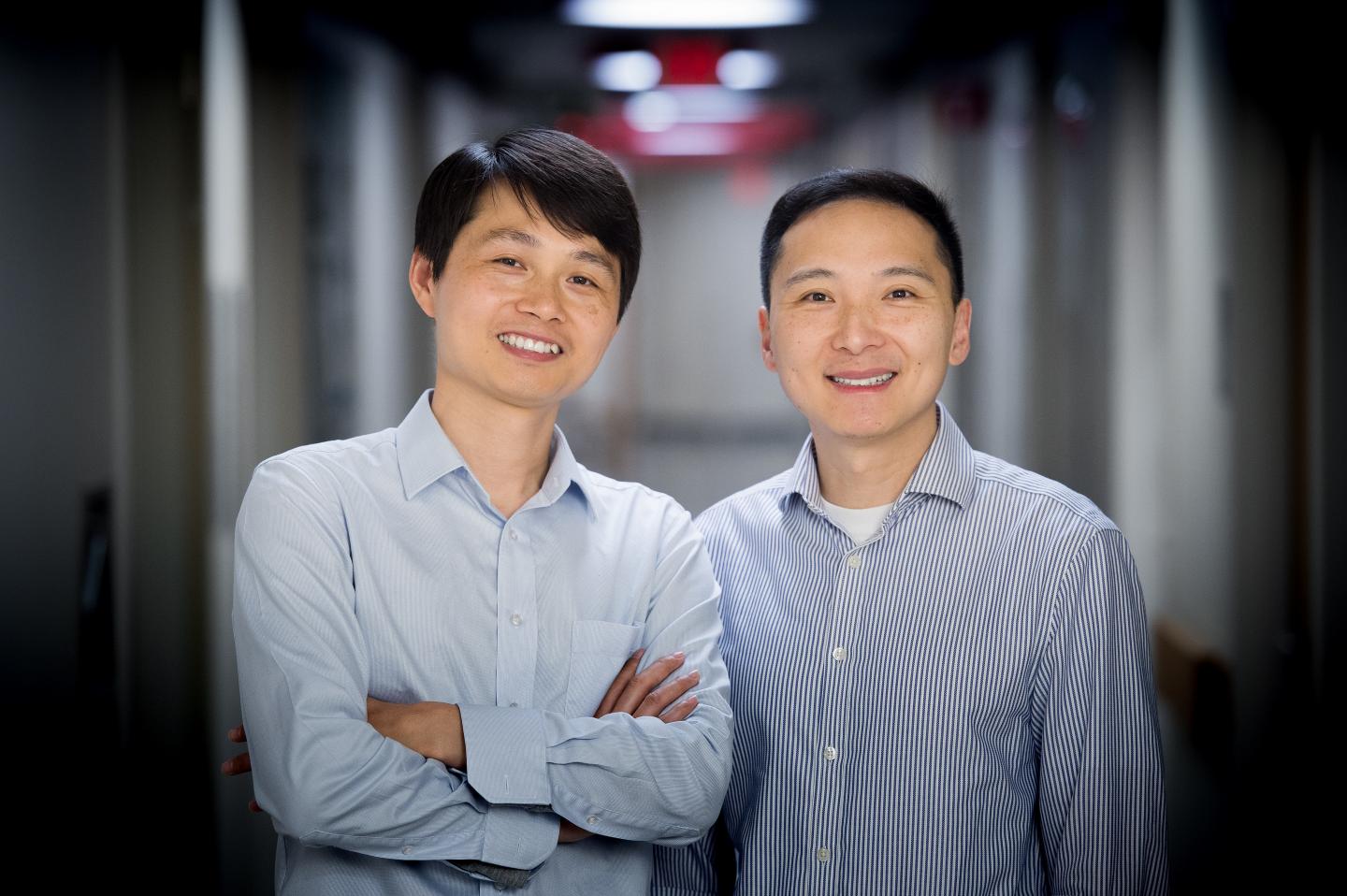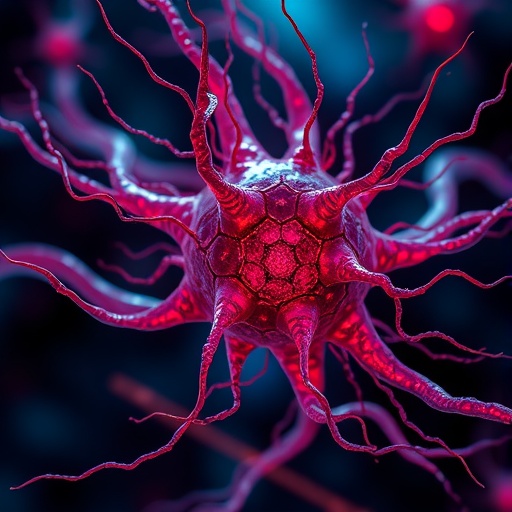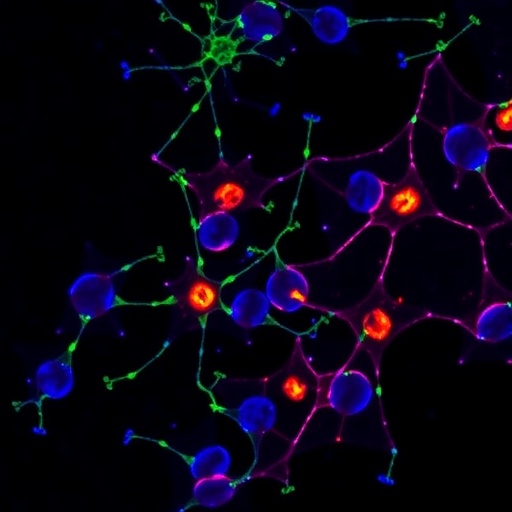
Credit: St. Jude Children’s Research Hospital
(MEMPHIS, Tenn.–Feb. 14, 2019) St. Jude Children’s Research Hospital scientists have identified genetic variations in a fourth gene that are associated with an increased risk of acute lymphoblastic leukemia (ALL) in Hispanic children. The research appears today in the journal Blood.
The gene is ERG, a transcription factor that is also mutated in the leukemic cells of some ALL patients. In this study, researchers identified inherited genetic variations in ERG that contribute to ALL risk, primarily in Hispanic children. These are germline variants carried in cells throughout the body, rather than the previously reported somatic mutations in cancer cells.
ALL is the most common childhood cancer, and Hispanic children have the nation’s highest incidence of the disease. They are also less likely than other children with ALL to survive.
“The more we understand the biology behind these disparities, the more likely we are to develop more effective therapies for different patient populations or better methods to track and monitor disease risk,” said corresponding author Jun J. Yang, Ph.D., an associate member of the Hematological Malignancies Program of the St. Jude Comprehensive Cancer Center and in the Pharmaceutical Sciences Department.
Ancestry and ALL risk
The study was a collaboration with the Children’s Oncology Group and one of the largest efforts yet focused on Hispanic patients with ALL. Yang and his colleagues compared common genetic variations in 940 genetically defined Hispanic ALL patients enrolled in COG clinical trials and 681 individuals of similar backgrounds without an ALL diagnosis. COG is the world’s largest cooperative pediatric cancer research organization.
Ethnicity was assigned based on gene variations representative of European, African and Native American ancestry. Hispanic ethnicity was defined as having more than 10 percent Native American gene variations as well as having more Native American than African gene variations.
Researchers confirmed previous findings that high-risk genetic variations in ARID5B, GATA3 and PIP4K2A were more common in Hispanic children and were associated with an increased chance of developing ALL. The investigators also identified high-risk variations in ERG that were associated with a 1.56-fold increased risk of ALL in Hispanic children. The individual risk, however, remains low, Yang said.
The risk was highest (doubled) for children with the highest percentage of Native American ancestry and lowest (13 percent) for children with the lowest percentage. That was surprising, Yang said, because for leukemia genes researchers discovered before, their effects on ALL genetic risk are usually consistent across ancestries.
In contrast, investigators found no significant increased ALL risk in African-American children with the high-risk ERG variations and just a 12 percent elevated risk in children of European ancestry.
“We found the high-risk ERG variants were more common in Hispanic children, but also had a stronger effect in Hispanics,” Yang said. Additional research is needed to understand the mechanism involved, including possible unidentified environmental or other factors that might play a role.
ERG and ALL risk
The findings also suggest ERG is an important regulator of normal blood development since either somatic mutations or germline variations that disruption gene function have now been implicated in launching leukemia. The Hispanic ALL patients in this study rarely had both ERG germline and somatic variations at the same time. The variations themselves also did not overlap.
###
The first authors are Maoxiang Qian, Ph.D., formerly of St. Jude and now of Fudan University, Shanghai, and Heng Xu, Ph.D., Sichuan University, Chengdu, China. The other St. Jude authors are Kathryn Roberts, Wenjian Yang, Xujie Zhao, Colton Smith, Ching-Hon Pui, Charles Mullighan, William Evans and Mary Relling, all of St. Jude; Virginia Perez-Andreu and Hui Zhang, formerly of St. Jude; and researchers from 15 other institutions in the U.S., China and Guatemala.
The research was funded in part by St. Baldrick’s International Scholar awards; the Robert J. Arceci award; grants (GM115279, CA156449, CA21765, CA36401, CA98543, CA114766, CA98413, CA140729, CA176063, GM92666) from the National Institutes of Health; a contract (HHSN261200800001E) from the NIH; and ALSAC, the fundraising and awareness organization of St. Jude.
St. Jude Children’s Research Hospital
St. Jude Children’s Research Hospital is leading the way the world understands, treats and cures childhood cancer and other life-threatening diseases. It is the only National Cancer Institute-designated Comprehensive Cancer Center devoted solely to children. Treatments developed at St. Jude have helped push the overall childhood cancer survival rate from 20 percent to 80 percent since the hospital opened more than 50 years ago. St. Jude freely shares the breakthroughs it makes, and every child saved at St. Jude means doctors and scientists worldwide can use that knowledge to save thousands more children. Families never receive a bill from St. Jude for treatment, travel, housing and food — because all a family should worry about is helping their child live. To learn more, visit stjude.org or follow St. Jude on social media at @stjuderesearch.
Media Contact
Michael Sheffield
[email protected]
901-846-6171
Related Journal Article
http://dx.




